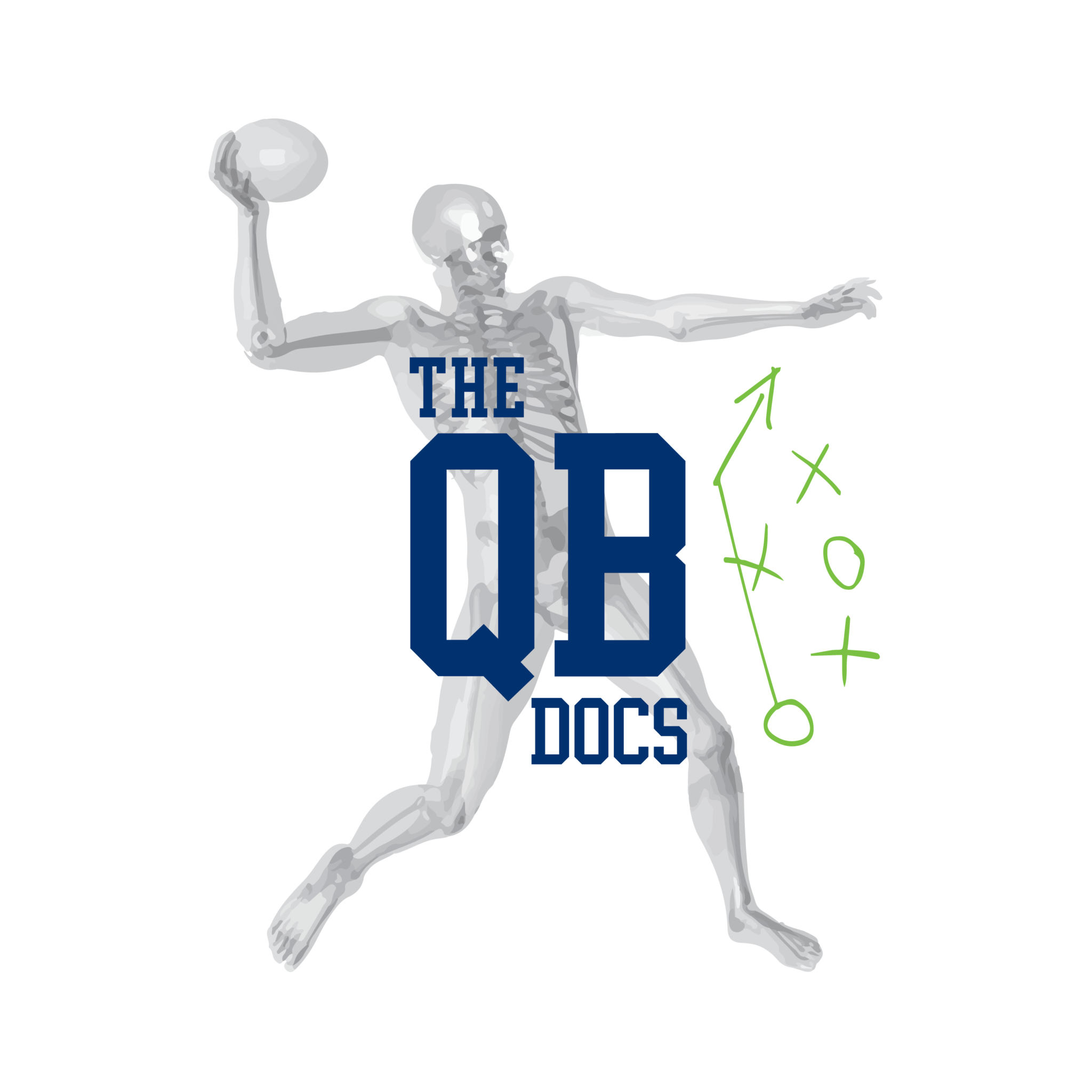by Drew Kiel | Aug 30, 2020 | Physical Therapy, Quarterback Training
It is extremely important to first review what the impairments are when an athlete wears a poor pair of “every day shoes.” Last week, we spent a lot of time focusing on the domino effect that happens when athletes wear shoes that have a high heel lift or a cushioned sole. Here is the big picture of what tends to happen after prolonged periods of wearing these types of shoes.
Shoes with heels —> Center of Mass that is Forward —> Tone in Calf Musculature —>
Tight Calfs —> Improper Squatting and Walking —> Walking with a Vault or with foot out —>
Tight Hip Flexors and Hip External Rotators —> Inability to Extend and Internally Rotate Hip —>
Decreased Accuracy and Velocity When Throwing For Quarterbacks
There’s a lot going on with this isn’t there? This might seem a little farfetched, but it is absolutely not. Today, we want to give you solutions on how to fix the local issue at the foot/ankle, but also strategies on how you can go about fixing the global problems that exist elsewhere in the body. Let’s get started!
by Drew Kiel | Aug 23, 2020 | Physical Therapy, Quarterback Training
There are lots of styles and brands of shoes out there that athletes can wear these days. Adidas, Nike, Under Armor and many others produce a wide variety of shoes that athletes wear when they perform on the field. Have you ever thought about how you should select an every day shoe to wear though? If you haven’t, then you fall into the category with the rest of the 99% of the population that select shoes just based off of how they look. There are actually extremely big implications on the foot and the rest of the body that will most definitely affect the way you perform on the playing field just by choosing the right pair of “every day” shoes. Today, let’s take a look at how this takes place.
by Drew Kiel | Jun 17, 2020 | Physical Therapy, Quarterback Training
Summer is upon us and we have been getting many questions about how players should approach their Summers in order to reach peak performance. There’s no perfect plan that we can put in place for players, but there are a variety of ways that quarterbacks can improve their performance. Today, we are going to give 10 tips for improving performance from a physical, mental, and emotional standpoint so quarterbacks can go light up the scoreboard this Fall! Some of these will surprise you. Check it out!
by Drew Kiel | Jun 3, 2020 | Physical Therapy, Quarterback Training
One of the questions that we most often get asked is “how do I fix my shoulder pain?” This is a very tough question for us to answer as the shoulder girdle is the most complex set of joints in the human body. There are many variables that will dictate the performance of the shoulder, especially when elevating the arm, that include the resting position of scapula, length of musculature that attaches to scapula, position of rib cage, strength of the muscles that attach to scapula, and the motor control of the actual movement that needs to be performed. If one of these variables is dysfunctional, then pain is likely for a quarterback that has to elevate the arm overhead to throw for thousands of repetitions. Today, we talk ALL about shoulder pain and give you a ton of exercises to fix it!
by Drew Kiel | May 27, 2020 | Physical Therapy, Quarterback Training
Most quarterbacks are gym rats when it comes to being in the weight room getting stronger, watching film, and on the field getting their reps throwing the football. The problem is that there is often times a discrepancy between the amount of time being put in to get better and how much improvement there actually is for the quarterback. The reason for this is that for most players, there is a lack of specificity in what they are doing to get better. This is especially true in the weight room. Today, we want to talk about 4 areas of the body that are often times forgotten to be trained by quarterbacks and why these areas are so important for proper QB performance on the field.
by Drew Kiel | May 20, 2020 | Physical Therapy, Quarterback Training
One of my favorite sayings by physical therapist Kelly Starrett is that “athletes need to work from trunk to sleeve.” What does this mean exactly? Well, it means that when athletes are working to improve their performance, they have to work from the torso to the extremities. You have heard us talk about all of these syndromes that quarterbacks can present with during their throwing motion. These include lateral leaning, trailing leg, snapping leg, over extension, and over striding. What would you say if I were to tell you that there’s one common denominator that plays a role in causing all of these syndromes? Well, there is! It’s a physical therapy term that we call “lower crossed syndrome” and it affects nearly 80% of the athletes we see. Today, we will do a DEEP dive into what this is, how it affects the throwing motion, and steps players can take to try and fix it.
